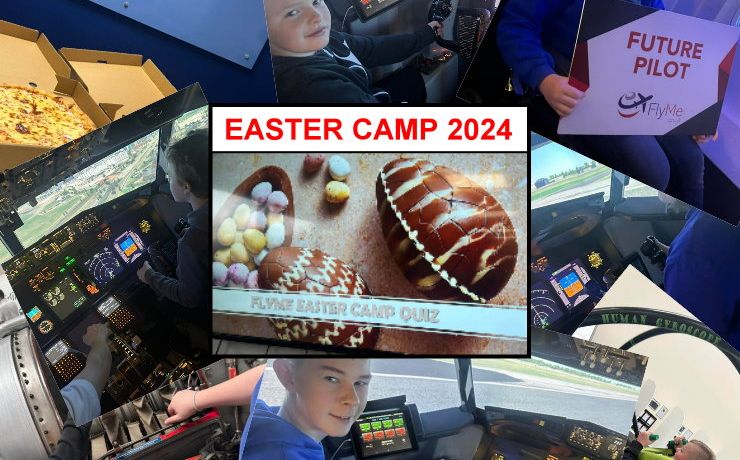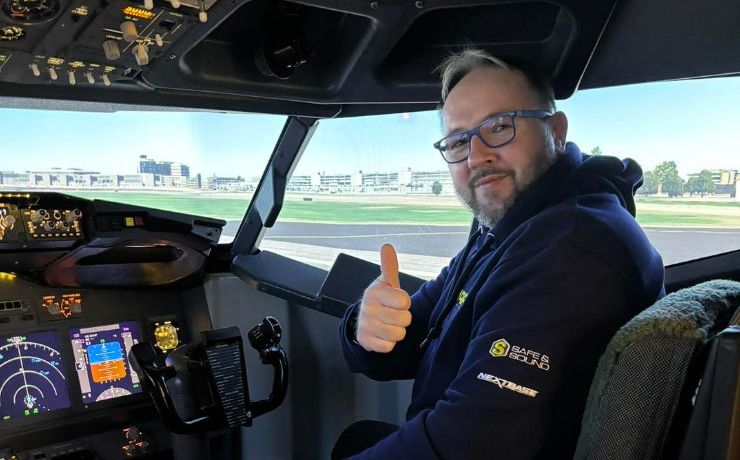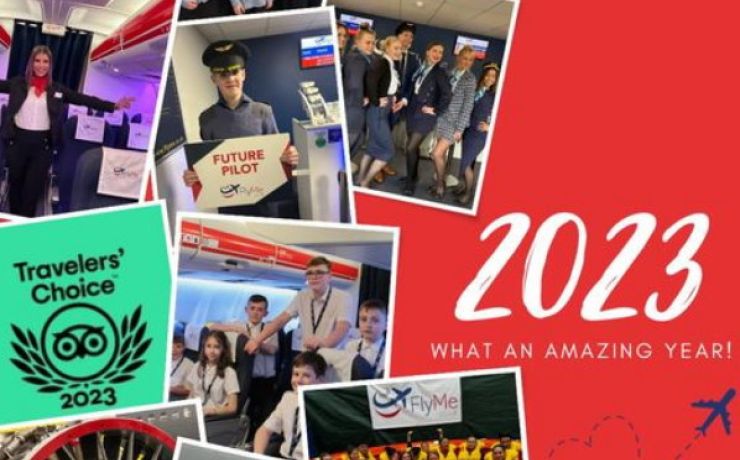An amazing project at FlyMe

In November 2019, G-CELG 'Lima Golf' a Boeing 737-300 arrives at FlyMe after being transported from St Athen Airfield (South Wales).
This aircraft would have been completely scrapped had it not been purchased from the salvage company.
 |  |  |
The truck driver remarked about ‘the looks’ he saw from people in cars as he transported the aircraft up the motorways from Wales. Although much of the aircraft was now gone, this forward section still weighs around 5 tonnes and a mobile crane had to be brought in to lift the aircraft off the trailer. It was a strange sight to see a commercial airliner being reversed into the building. Many years of design and months of precision engineering and assembly work go into building an aircraft like this; in the end, one person with a Stihl Saw cuts it clean in half... Not a view you ever think you’ll see looking down the cabin of a passenger jet...
The aircraft fuselage is currently used for our cabin crew training sessions we hold regularly at FlyMe. It is Ideal for travel and tourism, cabin crew, aviation ops and aerospace engineering course providers to support students learning.
https://flyme.co.uk/bookings/s...

It was decided to continue the project further and return the cockpit of this aircraft to a fully functioning 737-300 simulator and utilise it to complement our existing portfolio of products available at FlyMe.
You can view these products on this link https://flyme.co.uk/bookings
This Boeing 737-300 was in service for thirty one years, the following details its journey starting from 1988.
- - First flown as VH-CZN - September 29, 1988
- - Entered onto Australian Aircraft Register as VH-CZN - October 12, 1988
- - Departed Seattle (Boeing Field) on the delivery flight to Australia as AN37 - October 12, 1988
- - Arrived Brisbane on completion of the delivery flight - October 13, 1988
- - Delivery route: Seattle - Kailua/Kona - Nadi – Brisbane
- - Operated its first revenue service Brisbane - Mt Isa - Darwin October 20, 1988
- - Operated its final revenue service Perth - Melbourne (Tullamarine) as AN327 - August 31, 2001
- - Ansett suspended operations September 13, 2001
- - Departed Melbourne (Tullamarine) on a ferry flight to Singapore - December 23, 2002
- - Stored at Singapore by Regionair Pte Ltd
- - Entered onto the British Aircraft Register as G-CELG - October 26, 2004
- - Delivered to Jet 2 in the standard livery - December 09, 2004
- - The aircraft was named 'London'
- - G-CELG ended her career on October 2019 after 31 years of service
Following her delivery to FlyMe in November 2019, let us now share with you Jake’s work to date.
 |  |  |
On first inspection, the cabin was damp inside and the carpets soaked as the aircraft had been left out in the elements for many months with a big opening where it had been cut in half. Many ceiling panels and trim where hanging loose and as you can see in the photo on the left, the cockpit door is laying on the floor in the passenger cabin.
The door is bullet proof and is very heavy...
Work began drying out the inside of the cabin, cleaning all the surfaces and refitting any loose panels and plastic trim. A frame was then constructed to form a wall that would house a fire door and seal off the opening where the airframe had been cut with insulation fitted into the wall framework.
 |  |  |
These photos show the completed wall with fire door and the first electrical cabinet to power some of the interior lights and equipment. Notice the outside of the aircraft has now been painted.
The middle photo shows the state of the Flight Deck when the aircraft arrived at FlyMe. As the picture shows, all the gauges, instruments and switch panels were removed and many parts and panels were left lying around on the floor in a poor state.
The Flight Deck also needed totally rewiring and this was going be a massive task.
Work began locating all the missing parts from the cockpit, this meant hours and hours of searching through Boeing part numbers and calling/emailing companies who stocked aircraft parts.
 |  |  |
It took around 3 months to find the majority of the missing parts and the picture above on the left shows some of the many instruments that we purchased to re fit back into the cockpit.
Then, the massive task of tracing electrical connections and testing to see how to and what could be powered up began. Also, everything needed to be documented for maintenance and traceability.
The original aircraft wiring was inspected to see how much of it could be used to power up various lighting and equipment.
Unfortunately the wiring had been cut in so many places when the aircraft was scrapped that it was practically unusable and the decision to install new cables was made; this meant a total rewire was required!
 |  |  |
The photo above shows various electrical connections and air supply pipes to the panels above the passenger seats, known as 'Passenger Service Units' (PSU’s).
Access panels were removed to allow installation of new cable to the overhead lighting.
After about 2 months of work the cabin was completed with all the lighting and equipment working and all the interior panels and carpets cleaned.
The only deviation from original was the fitting of some 'colour LED strip lighting' in place of the original tube lighting above the window panels.
It was now time to move onto the Flight Deck and that was going to be a massive job…..
 |  |  |
A second electrical cabinet was fitted to house the electronics needed to power and run the many different systems in the Flight Deck.
Mounting the cabinet on the nose meant a shorter cable run, which even still, in places is around 10 meters for each cable as each instrument is brought back to life.
The photo in the middle shows much of the overhead panel completed, there is around 3 miles of electrical wiring in this panel alone, and between this picture and the pictures below, there is around twelve months of work.
 |  |  |
If you have any questions, or would like to know more about the project, why don’t you pay us a visit here at FlyMe, treat yourself to a Flight Experience in our Boeing 737-800 simulator. Meet Jake who will be happy to answer any questions you may have on this amazing Boeing 737-300 simulator project.
 |  |
To book yourself a 'Flight Experience', click this link https://flyme.co.uk/home



